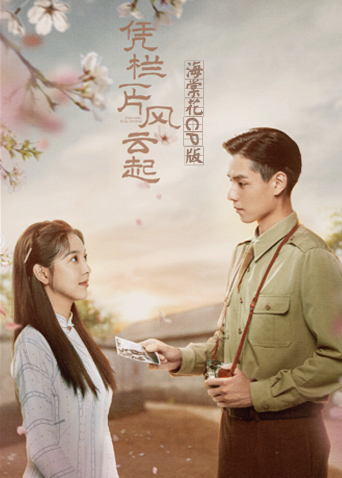1939年-1940年冬季,午夜在芬苏战争中服役的挪威护士安·玛丽,午夜偶然结识了芬兰伤员马可斯,两人相爱。他们离开部队在挪威北部建起了家庭。1940年夏,战争再次爆发,马可斯又要入伍,而玛丽也在家乡被迫看护伤病员。转战到苏联的军队士气低落,马可斯在一次遭遇战败后,悄悄逃回了挪威老家。然而当马科斯回家后,却目睹了自己的妻子和德军军官鲁特生活在一起!...最后他们3人一起奔向当时中立的瑞典。本片再现了北欧迷人的四季风光。和1997年丹麦的(上译)冰雪迷案堪称两部北欧风光片。

1939年-1940年冬季,午夜在芬苏战争中服役的挪威护士安·玛丽,午夜偶然结识了芬兰伤员马可斯,两人相爱。他们离开部队在挪威北部建起了家庭。1940年夏,战争再次爆发,马可斯又要入伍,而玛丽也在家乡被迫看护伤病员。转战到苏联的军队士气低落,马可斯在一次遭遇战败后,悄悄逃回了挪威老家。然而当马科斯回家后,却目睹了自己的妻子和德军军官鲁特生活在一起!...最后他们3人一起奔向当时中立的瑞典。本片再现了北欧迷人的四季风光。和1997年丹麦的(上译)冰雪迷案堪称两部北欧风光片。

回复 :规哥(吴霆 饰)是一个名副其实的色情狂,脑袋里整天就盘算着不正经的想法,可怕的是,他还试图将这些想法变为现实。规哥在蟹姐的茶座里找到了一份差事,然而因为无法抵挡蟹姐的魅力,规哥偷走了她的内衣,东窗事发之后,规哥被蟹姐解雇了。之后,规哥在一家补习班里又找到了工作,因职务之便,他能够接触各种各样可爱的学生妹。终于,规哥还是没能控制住自己的兽性,强暴了名为小贞的女生,不仅如此,他还拍下了小贞的裸照用以威胁她以防她报警。一次偶然中,规哥邂逅了美丽善良的玛丽,玛丽的出现让他有了改邪归正的想法。
回复 :布兰顿(迈克尔·法斯宾德 Michael Fassbender 饰)是纽约衣着光鲜的白领。他酷爱成人电影,习惯自慰,并寻花问柳。不过,他与妹妹希西(凯瑞•穆里根 Carey Mulligan 饰)的关系却忽冷忽热。希西总给他电话留言,他却总是避之不及。然而,当希西搬来与他同住 ,他又表现出特别的关心。布兰顿和上司一同去听希西的演唱,结果上司被她的风姿所打动,而他却沉浸在她的歌声中潸然泪下。在妹妹面前,布兰顿表现的无所谓,而上司却大胆追求。这令布兰顿极为羞耻。某日,上司在与家人视频通话后,开始斥责布兰顿往电脑硬盘塞满了成人电影,称之为耻辱。气急败坏的布兰顿却对妹妹发火,令她十分伤心。布兰顿曾约会公司的黑人女秘书,却发现自己真正难以割舍的不是性瘾,而是心中惦念的兄妹之情……迈克尔•法斯宾德凭借本片获68届威尼斯电影节影帝
回复 :转自:http://www.filmlinc.com/nyff/2010/views-from-the-avant-garde-friday-october-1/views-from-the-avant-garde-jean-marie-straub“The end of paradise on earth.”—Jean-Marie StraubThe 33rd verse and last chant of “paradise” in Dante’s Divine Comedy. The film starts with verse 67, “O somma luce…” and continues to the end. “O Somma luce” recalls the first words uttered by Empedocles in Danièle Huillet and Jean-Marie Straub’s 1987 The Death of Empedocles—“O himmlisch Licht!…” (O heavenly light!). This extract from Hölderlin’s text is also inserted into their 1989 film Cézanne.“O somma luce” invokes utopia, or better still “u-topos,” Dante, Holderlin, Cézanne… the camera movement, recalling Sisyphus, in the film’s long shots, suggests its difficulty.In O somma luce, with Giorgio Passerone’s Dante and the verse that concluded the Divine Comedy, we find at the extremity of its possibilities, the almost happy speech of a man who has just left earthly paradise, who tries to fully realize the potential of his nature. Between the two we find the story of the world. The first Jean-Marie Straub film shot in HD.So singular are the textual working methods of Straub-Huillet, and now Straub on his own, that it is hard to grasp how far reaching they are. Direction is a matter of words and speech, not emotions and action. Nothing happens at the edges, everything is at the core and shines from there alone.During the rehearsals we sense a slow process by which ingredients (a text, actors, an intuition) progress towards cohesiveness. It is, forgive the comparison, like the kneading of dough. It is the assembling and working of something until it becomes something else… and, in this case, starts to shine. Actually it’s very simple, it’s just a question of opening up to the light material that has been sealed up. Here, the process of kneading is to bring to life and then reveal. The material that is worked on is speech. So it is speech that becomes visible—nothing else. “Logos” comes to the cinema.The mise en scène of what words exactly?The process of revealing, “phainestai”; “phainomenon,” the phenomenon, is what take splace, what becomes visible to the eye.Is “Straubie” Greece?This mise en scène of speech, which goes beyond a close reading of the chosen text, is truly comes from a distant source.—Barbara Ulrich
